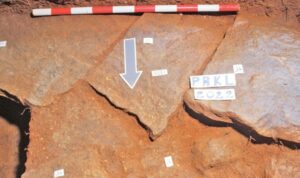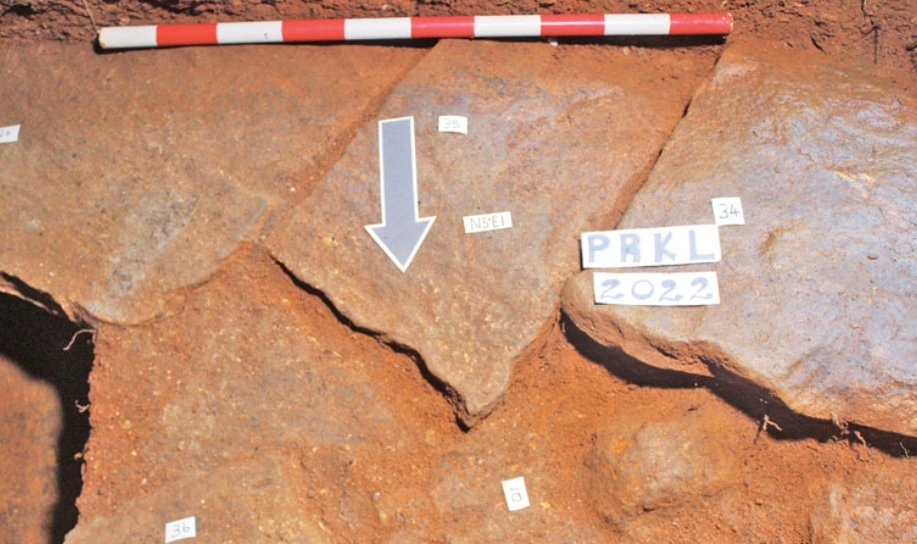“One of the most fascinating aspects of the Kebella-Lena discovery is the evidence of early human body ornamentation and ritual practices. The use of red ochre, as well as the remains of crafted items such as bird and deer teeth jewellery, suggests the early use of personal adornments. These materials were likely symbolic, possibly representing power or social status within their communities.”
Sri Lanka’s Ancient Rainforest: Archaeological Discoveries at Kebella-Lena Rock Shelter
Sri Lanka’s tropical rainforest, particularly the Sinharaja Forest, has long been recognized as a haven for unique biodiversity. Recent archaeological research has confirmed the presence of a long human history in the island’s tropical environment. The Kebella-Lena rock shelter, located in the Kalutara District, near the Sinharaja rainforest, has yielded remarkable evidence of early human habitation.
The discovery of the Kebella-Lena rock shelter dates back to 2017, when a team of archaeologists from the Department of Archaeology first began their excavation of the site. Initially identified during a survey of the area, the settlement was located in a remote section of the Sinharaja rainforest. After initial findings were reported, further archaeological work in 2022, under the guidance of Dr. Nimal Perera and senior lecturer Pahiyangala Sumangala, revealed the site’s true significance. The excavation project was a collaborative effort between the Sri Lanka Buddhist University and Sichuan University in China.
This rock shelter, hidden deep within Sri Lanka’s rainforests, holds evidence of early human settlements dating back thousands of years. Its strategic location provided early humans with ample resources, from fresh water to diverse plant and animal life, making it an ideal spot for settlement. Through careful excavation, the research team uncovered a wealth of artifacts and ecofacts that provide new insights into the lives of these early inhabitants.
The rock shelter environment in which these findings were made is part of a rainforest that has remained largely unchanged for over 50,000 years. This rainforest provided a suitable habitat for early humans who likely migrated from Africa, establishing themselves in this rich, diverse ecosystem.

Among the most important discoveries at Kebella-Lena were the remains of “floor stone tiles,” marking the earliest known human settlements in South Asia. While similar artifacts have been found at other sites, none of them were as well preserved as those at Kebella-Lena.
The research team also unearthed evidence of early tool-making, including tiny geometric-shaped stone implements (known as micro-tools), which were used by early humans to hunt small animals, such as rodents and birds. These tools are notable for their precise craftsmanship and small size, often under 4.5 cm, and were made from hard stones, possibly quartzite. These types of tools, typically associated with early humans in Africa, have now been found in Sri Lanka, linking the island to broader human migration patterns.vidence of ritualistic practices was also uncovered, including bones of small mammals and birds, suggesting that early humans engaged in hunting and ceremonial practices. In addition, remains of freshwater fish, reptiles, and plant-based foods, such as fruits, roots, and medicinal herbs, were identified, indicating a diet that relied heavily on the rich natural resources of the rainforest.
In summary, the Kebella-Lena findings paint a picture of an early human society deeply integrated with its rainforest environment, using the land’s resources for food, tools, and symbolic purposes. The evidence of personal adornment and ritual practices adds a compelling layer to the understanding of these early inhabitants, suggesting complex social structures and cultural behaviors.
The complete research was published in the prestigious Quaternary Science Reviews journal under the title “Terminal Pleistocene to Mid-Holocene Rainforest Foragers in Sri Lanka: Multidisciplinary Insights at Kebella-Lena Rock Shelter,” on January 21.







